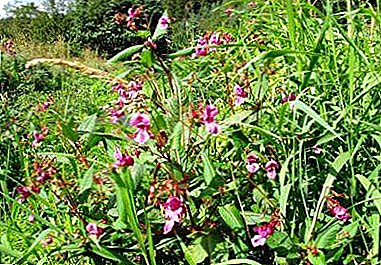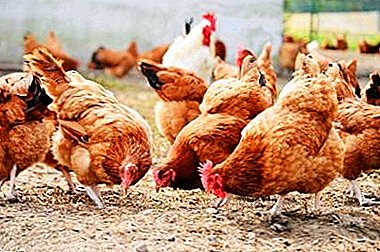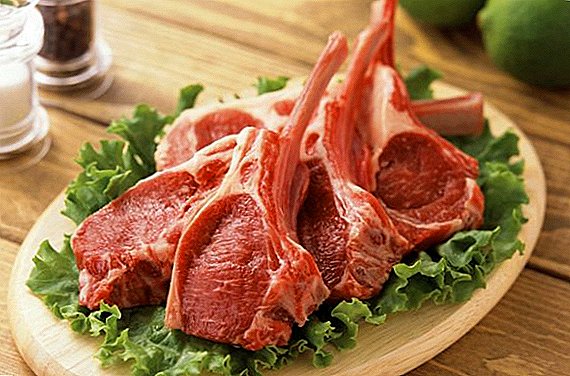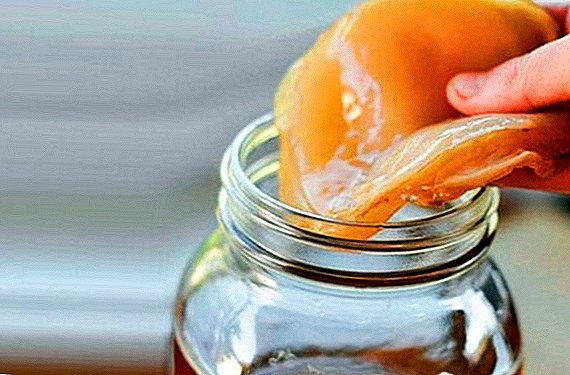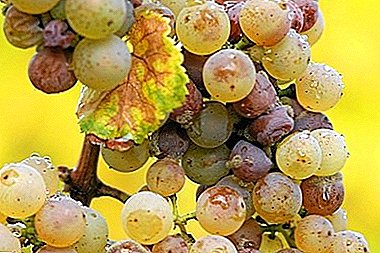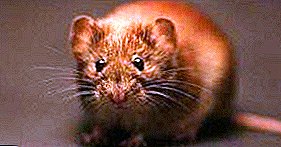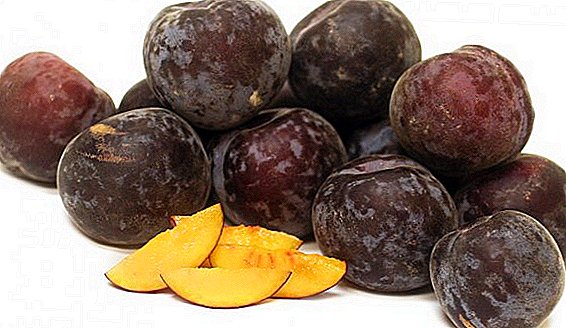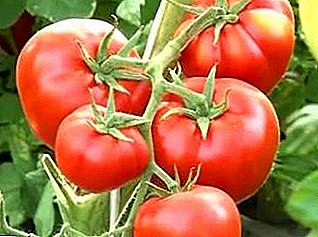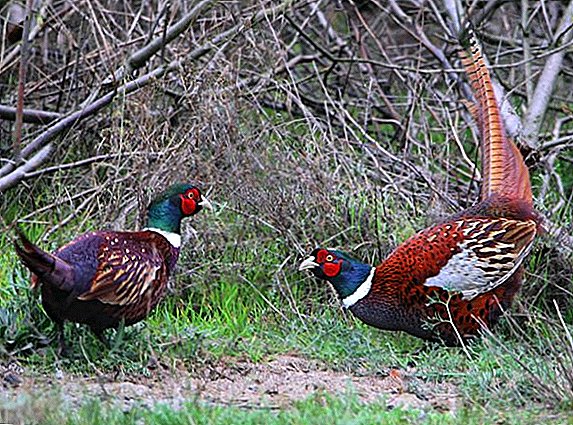 Pheasant diseases can be divided into 2 large groups: infectious and non-contagious. Contagious infections include viral and bacterial infections, as well as parasitic invasions. Non-infectious diseases include diseases that result from injuries or improper keeping of birds. Also in birds, there may be a metabolic disorder. On the causes and symptoms of the most common diseases, as well as methods for their treatment and prevention, read our article.
Pheasant diseases can be divided into 2 large groups: infectious and non-contagious. Contagious infections include viral and bacterial infections, as well as parasitic invasions. Non-infectious diseases include diseases that result from injuries or improper keeping of birds. Also in birds, there may be a metabolic disorder. On the causes and symptoms of the most common diseases, as well as methods for their treatment and prevention, read our article.
Infectious diseases
Infectious diseases are caused by microorganisms, fungi, viruses and are quickly transmitted from bird to bird by airborne droplets or other means. If the diseased birds are not quarantined in time and the treatment is not started, you may encounter an epidemic in the house. These contagious diseases can cause a lot of trouble and serious economic losses.
Aspergillosis
This disease can occur in an acute and chronic form. Infection occurs through the respiratory tract. The incubation period is from 3 to 10 days. Death occurs within 2-6 days. Young individuals are most sensitive to aspergillosis. The disease is dangerous for humans.
Symptoms:
- wobbly walk;
- muscle tremors;
- convulsions;
- paralysis;
- lethargy;
- low mobility;
- sneezing;
- pulling the head up;
- increased and difficulty breathing;
- the appearance of frothy fluid from the nose and mouth;
- lag in growth and development;
- indigestion

The reasons:
- the spread of mushrooms from the genus Aspergillus in the soil, feed, bedding, water;
- non-observance of sanitary and hygienic norms during maintenance (dampness, lack of ventilation, dirt, increased population density).
Did you know? Common pheasant is the national bird of Georgia - one of the legends about the founding of the capital, Tbilisi, is associated with it. This feathery is used to prepare a national dish called chakhokhbili.Prevention:
- disinfection of the room (sodium hydroxide, formaldehyde, "Vircon-C");
- feeding of birds with the preparation "Nystatin" (350-400 units per 1 l of water);
- feeding only fresh and high-quality food;
- monitoring the purity of the water;
- control of dryness in the house;
- disinfection incubator.

Marek's disease
This disease is also called avian AIDS, because when infected with it, the immunity is sharply reduced, and the bird begins to constantly suffer from other diseases. The incubation period lasts from 2 to 16 days.
Familiarize yourself with the best breeds of pheasants, as well as consider all the details of the content of gold, white and eared pheasants at home.
Symptoms:
- paralysis of the limbs and neck;
- twisting toes;
- change in the iris;
- pupil deformity.
The reasons:
- infection from another bird through the respiratory tract, digestive system and feather follicles;
- virus transmission through water, feed, down, dust, inventory, insects.
 Treatment: not developed. Sick feathered destroy.
Treatment: not developed. Sick feathered destroy.Prevention: The only prophylactic method is vaccination of chicks at day old.
Infectious laryngotracheitis
A common disease in poultry. It is characterized by inflammation of the larynx, trachea. Caused by a virus from the Herpes family. The incubation period is from 6 to 10 days. It may be acute, chronic and without symptoms.
Symptoms:
- inflammation of the larynx and trachea;
- cough;
- sneezing;
- discharge from the nose and eyes;
- drop in egg production;
- loss of appetite.
The reasons:
- virus transmission from infected pheasant through air, water, feed, inventory.
Treatment: drugs are not developed. To reduce the fall of birds and the drop in egg production, antibiotics are used.  Prevention:
Prevention:
- disinfection of the room with birds with aerosols with iodine powder, aluminum powder, iodinol;
- double vaccination.
Read more about how to breed pheasants at home.
Coccidiosis
Another very common disease on farms where birds are kept. Caused by parasites coccidia. Most often develops in spring and summer. It affects adults and young individuals.
Symptoms:
- depressed state;
- lethargy;
- loss of appetite;
- indigestion with bloody diarrhea;
- ruffled feathers.
The reasons:
- confined space;
- dirt in the house;
- contaminated feed and water.
 Treatment: produce drugs "Furazolidone", "Furacilin", "Norsulfazol" and others.
Treatment: produce drugs "Furazolidone", "Furacilin", "Norsulfazol" and others.Important! Lack of treatment leads to the death of the bird 4-7 days after the first symptoms appear.
Prevention:
- produced by evaporation of the drug "Koktsiprodin" for 2 days;
- the introduction of drugs "Baykoks", "Amprolium", "Avatek", which are mixed in food or given with water;
- regular disinfection of equipment and premises;
- observance of sanitary and hygienic norms;
- You should not keep birds of different ages in the same house.
Colibacteriosis
This serious illness causes E. coli. Young individuals that have caught it die almost 100% of the time. The wand can persist in the environment from 3 to 5 months. Infection occurs through airborne droplets, through feces, food, water, penetrates through the egg shells to the embryo.  Symptoms:
Symptoms:
- weakness;
- mucous discharge from the nose and eyes;
- emaciation;
- sinusitis;
- increased and difficult breathing;
- decrease in productivity;
- blue beak;
- loose stools.
The reasons:
- non-observance of sanitary and hygienic norms when keeping birds.
Important! Antibiotic treatment must necessarily be accompanied by the introduction of probiotics, otherwise there may be problems with the digestive tract. Such drugs include "Bifinorm", "Bifidumbakterin", "Narine", "STF-1/56", "Kolibakterin". Antibiotics are given for 5 days, probiotics - within 1-2 weeks.Treatment:
- drugs "Levomitsetin", "Tetracycline", "Baytril", "Lexoflon OR", "Enronit", "Enronit OR" and others.

Prevention:
- disinfection of the room every 10 days;
- disinfection of eggs with formaldehyde vapor, hydrogen peroxide;
- the administration of Enronit OR in prophylactic doses;
- compliance with recommended feeding rates.
Smallpox
The disease causes the pathogen Avipoxvirus. It leads to serious economic damage, as it is accompanied by a high mortality rate.
Symptoms:
- round, pale yellow, and later red spots on the beak, eyelids, crest, beard, which turn into nodules, covered with crusts;
- lacrimation;
- photophobia;
- swelling of the eyelids.
The reasons:
- contact with a sick bird;
- contact with contaminated equipment or clothing of poultry farm workers;
- transmission from rodents and insects;
- the use of food, water with the pathogen.
 Treatment:
Treatment:- drug "Anfluron" (2 ml / 1 l of water, 3 days);
- disinfection of the room with formaldehyde (40%), lime (20%).
Prevention:
- vaccination;
- disinfection of premises and equipment;
- control over the quality of feed and water.
Read more about the rules of feeding pheasants at home.
Ornithosis (psittacosis)
A viral disease that affects birds, animals and humans. The causative agent - chlamydia, is transmitted through the air and through dust, food, water. It is characterized by damage to the internal organs, organs of vision, nervous, and reproductive systems. Most often affects birds in the autumn-spring period. The duration of the incubation period - from 3 days to 3 weeks.
Symptoms:
- decreased appetite;
- lethargy;
- diarrhea;
- weight loss;
- nasal discharge.
 The reasons:
The reasons:- contact with diseased birds;
- lack of hygiene in the house;
- contact with rodents, sick wild animals.
Treatment:
- poultry house disinfection with aerosols in the presence of birds;
- antibiotic therapy (tetracycline (40 mg / 1 kg of weight), dibiomycin, chloramphenicol, erythromycin (40-50 mg / 1 kg of weight), tilanom, etc.).
Prevention:
- keeping separately birds of different ages;
- disinfection in poultry houses;
- vaccination.
You will probably be interested in reading about how to catch a pheasant with your own hands.
Scab (favus)
Fungal scab disease is transmitted by contact through wounds in the skin. The duration of the incubation period is 3 weeks.  Symptoms:
Symptoms:
- gray-white crusts on the fingers;
- crusts on the eyelids and other non-penned areas;
- exhaustion;
- appearance of scabs.
The reasons:
- contact with a sick bird;
- contact with contaminated equipment.
Treatment:
- treatment with fungicidal ointments, iodglycerol;
- fortifying drugs and vitamins;
- drug "Griseofulvin" (inside).
Prevention:
- disinfection of premises and equipment;
- timely placement of a diseased bird in quarantine;
- ultraviolet irradiation.

Pasteurellosis
Rapidly developing disease with an incubation period from days to 9 days. It is excited by the bacterium Pasteurella. Death of diseased birds occurs within 2-3 days.
Symptoms:
- lethargy;
- low mobility;
- nasal discharge;
- increased body temperature;
- ruffled feathers;
- lack of appetite;
- rapid, labored breathing;
- increased thirst;
- lameness;
- bloody diarrhea.
The reasons:
- contact with an infected bird, inventory, room;
- dampness in the house;
- overcrowding of the house;
- substandard feed.
 Treatment: not provided. Infected birds are destroyed.
Treatment: not provided. Infected birds are destroyed.Prevention:
- vaccination with anti-vascular vaccines.
Did you know? In the wild, pheasants live in monogamous families, while domesticated specimens prefer polygamy.
Pseudochium (Newcastle disease)
A serious viral disease that develops 1-10 days after the pathogen enters the body. Infection is carried out through the skin, mucous membranes of the nose and eyes. The pathogen affects the nervous system, internal organs, respiratory organs.
Symptoms:
- depressed state;
- inactivity;
- discharge from the nose and beak;
- blue scalp;
- green diarrhea, sometimes mixed with blood.
The reasons:
- virus entry through feed;
- contact with the diseased bird.
 Treatment: not provided. The occurrence of the disease should be reported to the veterinarian.
Treatment: not provided. The occurrence of the disease should be reported to the veterinarian.We recommend reading about how to treat Newcastle disease in chickens and pigeons.
Prevention:
- disinfection of premises and equipment;
- vaccination.
Respiratory Mycoplasmosis
Most often it affects the respiratory tract of chicks aged 2 to 4 months. Less common in adults.
Symptoms:
- lack of appetite;
- swelling of the larynx;
- nasal discharge;
- growth retardation;
- reduced egg production.
The reasons:
- sudden changes in temperature;
- dampness;
- unbalanced diet;
- poor ventilation of the room;
- increased amount of dust in the house.
 Treatment:
Treatment:- antibiotic therapy with tetracycline preparations and "Furazolidone" with the report of the presence of the disease in the veterinary service.
Prevention:
- maintaining microclimate parameters in the house;
- organization of full feeding;
- observance of sanitary and hygienic rules.
Salmonellosis
A dangerous disease of birds that can infect humans. Salmonella microbial is excited. The incubation period is short - 3-5 days. It affects the gastrointestinal tract, may be accompanied by pneumonia and arthritis. Pheasants can pick up salmonellosis through food, water, infected litter.
Symptoms:
- lethargy;
- drowsiness;
- lack of coordination of movements;
- disorder in the digestive tract;
- bonding fluff in the area of the cloaca;
- conjunctivitis.
 The reasons:
The reasons:- contact with an infected bird;
- overcrowding;
- unsanitary conditions;
- dirty water.
Treatment:
- destruction of sick individuals;
- disinfection of premises and equipment;
- floor treatment with hydrated lime.
It will be helpful for you to read about how to treat salmonellosis in chickens and pigeons.Prevention:
- use of antibiotics in birds that have had contact with sick individuals (levomycetin, enrofloxacin, gentamicin, neomycin, etc.);
- vaccination;
- bacteriophage spraying;
- quality control of feed and water.
Spirochetosis
An infectious disease that occurs in an acute form. It is excited by the spirochete bacteria. The duration of the incubation period is 4-10 days.  Symptoms:
Symptoms:
- fever;
- blue mucous membranes;
- indigestion;
- paralysis;
- convulsions;
- ruffled plumage;
- fever;
- lack of appetite.
The reasons:
- contact with an infected bird;
- non-compliance with sanitary and hygienic standards.
Treatment:
- intramuscular administration of arsenic (0.2-0.5 mg / 1 kg of weight), neosalvarsan (0.3-0.5 mg / 1 kg of weight);
- the use of drugs "Novarsenol", "Osarsol", "Chlortetracycline";
- administration of antibiotics (penicillin, morfocycline, disulfan).
Video: spirochetosis of birds Prevention:
- immunization;
- timely disposal of ticks in the house;
- observance of sanitary and hygienic rules;
- disinfection of premises and equipment;
- quarantine of the incoming bird.
Non-contagious diseases
As in the case of infectious diseases, in case of non-infectious diseases, the first symptoms that tell the owner that something is wrong with the birds are apathy and loss of appetite. If the owner has noticed such signs, then the next thing he should pay attention to is - this state of feathers and skin, evenness of breathing, purity of the cloaca, setting limbs.
Such birds should be quarantined and carefully observed. If you do not manage to establish the diagnosis of the symptoms, you should contact your veterinarian.
As the name implies, non-communicable diseases can not be infected from bird to bird or through the air, through food. The most common causes of such diseases are improper conditions of detention, lack of proper care, poor feeding, fighting with relatives, injuries. 
Dermatitis
Dermatitis - it is an inflammation of the skin of a bird. It delivers severe discomfort to the bird. Most often it is excited by staphylococci or intestinal sticks.
Symptoms:
- reddened areas on the skin;
- the formation of gray-yellow crusts;
- feather loss;
- self-injury by spitting up blood;
- itchiness
The reasons:
- injuries, bruises;
- lack of vitamins and minerals.
Treatment: produced by the scheme - the introduction of antihistamines, vitamin preparations, treatment of wounds with antiseptics, treatment with synthomycin ointment.
Prevention:
- timely treatment of wounds on the skin of birds with antiseptics;
- prevent fights between birds.

Delayed egg laying
Most often observed in layers in the spring. With a delay lasting about a week, the situation ends in the death of the feathered one. The hens suffering from this problem are most often slaughtered in the corners of the house, and refuse to go out to the paddock.
Symptoms:
- traces of blood;
- tension when feeling the abdomen.
The reasons:
- vitamin deficiency;
- hypothermia;
- the formation of large eggs.
Treatment:
- conducting warm baths;
- smearing cloaca with petroleum jelly;
- massage the abdominal wall.
Prevention:
- balanced nutrition for layers;
- content in a warm house.

Goiter infestation
Sometimes birds may experience blockage of the passage from the goiter to the stomach.
Symptoms:
- hard goiter;
- lethargy;
- lack of appetite;
- excessive thirst.
The reasons:
- greedy eating food;
- feeding only dry food;
- overfeeding;
- hit in the goiter of a foreign object.
Treatment:
- massage goiter, which should help pass the contents into the stomach;
- in the absence of the effect of the massage, opening of the goiter and its purification.
Prevention:
- dosed feeding;
- feeding at the same time at regular intervals;
- alternation of dry feed with wet mash.

Cloacite
Clotsitomi called inflammation in the mucous membrane of the cloaca. Its first symptoms are found when the nature of the litter changes.
Symptoms:
- passive, depressed state;
- increased thirst;
- loose or compacted stools in the form of lumps;
- dyspnea.
The reasons:
- the use of food, which is difficult to digest the digestive tract of pheasants;
- excessive amounts of gravel and sand;
- ingestion of a foreign object into the gastrointestinal tract;
- delayed egg production.
Treatment:
- instillation in the beak of castor, paraffin or olive oil (1-2 drops);
- adding a solution of Carlsbad or Glauber's salt to water (1 to 200).
 Prevention:
Prevention:- to comply with the norms in pouring gravel and sand into the feeder;
- feed poultry balanced feed;
- Do not give products prohibited for pheasants.
Runny nose
Like other domestic birds, pheasants can suffer from rhinitis. They often sneeze, and from the nose a large amount of transparent discharge appears.
If you do not start treating a runny nose in time, then in the advanced stage it causes severe discomfort to the bird. - when gluing the plumage, heights are formed, from which further blood or ichor flows. To get rid of trouble, pheasant constantly scratches its nose on various surfaces.
Symptoms:
- copious nasal discharge;
- sneezing
The reasons:
- low temperatures in the house;
- the presence of drafts.
 Treatment:
Treatment:- eliminate the causes of rhinitis;
- the introduction of antibacterial drugs;
- carrying out vitamin therapy.
Prevention:
- control that the birds are not supercooled;
- house insulation;
- heated drinking water in winter.
Did you know? Pheasants do not differ loud voice: they like to cluck more; an exception can be only a marriage period.
Frostbite
When pheasants are exposed to extremities of too low temperatures, they may experience frostbite: if they turn out to be very strong, fingers may die and fall off.
Symptoms:
- swelling of the limbs;
- itching;
- splaying;
- bleeding.
 The reasons:
The reasons:- exposure to low temperatures.
Treatment:
- relocation of birds to a room with a positive temperature;
- smearing frostbitten areas with oxytetracycline ointment, petroleum jelly, grease.
Prevention is the control to:
- there was warm bedding in the winter house;
- the birds did not walk in the snow and frosty ground.
Fractures
Pheasant fractures usually suffer during feather changes. It is then that the body lacks calcium, and the limbs become fragile. Fractures of the fingers can occur without human intervention. For minor limb fractures, the bird will need help; in severe, with a muscle break the bird must be destroyed.
The reasons:
- lack of calcium in the body.
Video: limb fractures in birds Treatment:
- tire overlap;
- plaster cast.
- additional introduction during the period of molting calcium.
Gout
Gout provokes discomfort when walking and also leads to intestinal upset.
Symptoms:
- round nodules on the joints of the foot and claws;
- liquid droppings;
- decreased appetite;
- profuse thirst.
The reasons:
- salt deposition as a result of kidney failure.
 Treatment:
Treatment:- opening the nodules and eliminating their contents;
- vypaivaniya solution of baking soda (2-3%).
Rasklev (cannibalism)
Symptoms:
- spitting and eating eggs;
- wounding each other on the head, neck, legs, in the area of the cloaca.
- overcrowding of the house;
- excessive lighting;
- lack of feed;
- violation of the regime of feeding.
- wound treatment with antiseptics;
- relocation of the most aggressive individuals.
- compliance with the rules of the maintenance and feeding of birds;
- removal of eggs prone to spitting eggs from the house.
Stretching joints
Occurs in case of hitting pheasants with their feet in the net or slot. In order to free itself, the bird strongly pulls the limb, as a result, it stretches the ligaments.
Symptoms:
- joint swelling;
- blueing of the joint.
- lubrication of the sprained joint with cortisone ointment;
- fixing the limb with an adhesive plaster.
Did you know? The pheasant has such a feature as sexual dimorphism: males are much larger and more beautiful than females, have bright and brilliant plumage.Prevention:
- reducing the risk of injury to birds by creating a safe house.

Emphysema
It is a subcutaneous accumulation of air.
Symptoms:
- swelling on different parts of the body with air inside;
- exfoliation of the skin;
- low mobility;
- hard breath;
- lack of appetite.
The reasons:
- injury;
- air bag shell rupture.
Treatment:
- skin incision and air release;
- antiseptic treatment;
- in advanced cases and when the infection is indicated, antibiotic therapy is indicated.
Prevention:
- reducing the risk of injury to birds;
- elimination of sources of fear.

Invasive diseases
Invasive illnesses result from parasite damage. In pheasants, there may be many varieties of worms, as well as skin harmful insects: ticks, lousefishes.
Helminthiasis
Symptoms:
- weakness;
- apathy;
- anemia;
- weight loss;
- reduced egg production;
- indigestion
The reasons:
- contact with infected birds;
- eating infected insects;
- ingestion of contaminated feed and water.
Learn how to get worms from chickens.
Treatment: depends on the type of worms. It should only be prescribed by a veterinarian based on tests. The introduction of broad-spectrum drugs "Mebendazole", "Albendazole", "Fenbendazol."
Video: prevention of worms by folk remedies in animals and birds Prevention:
- periodic - once a year, the implementation of preventive courses for cleaning the body of birds from worms.
Histomoniasis
The disease occurs mainly among young stock, leading to inflammation and liver damage. Called by the simplest unicellular organisms histomonads.
Initially settling in the stomach, the pathogen quickly enters the intestine and liver, where it actively reproduces and leads to a deterioration of the condition of the bird. Without treatment, the mortality of young individuals reaches 70%.
Symptoms:
- decreased activity;
- decrease in appetite;
- green diarrhea with an unpleasant odor;
- darkening of the skin on the head;
- decrease in body temperature by 1-2 degrees;
- dullness of plumage.
 The reasons:
The reasons:- non-compliance with veterinary and sanitary conditions;
- violations of the technology of rearing young individuals - improper feeding and temperature conditions, overcrowding.
Treatment:
- drugs "Metronidazole", "Furazolidone", "Nitazol", "Osarsol" and others;
- deworming with Alvet, Alben, Tetramisole;
- disinfection of the room.
Prevention:
- separate keeping of young and adult individuals;
- compliance with recommendations on the density of the house;
- observance of sanitary and hygienic norms;
- high-quality feeding;
- equipment of the place of walking in the sun.
Tick-borne respiratory disease
With minor lesions of the airways by ticks, the disease may be asymptomatic. Severe infection leads to the appearance of characteristic symptoms in the bird. Perhaps the death of suffocation.  Symptoms:
Symptoms:
- dyspnea;
- cough;
- losing weight
The reasons:
- violation of sanitary and hygienic standards of content.
Treatment:
- the application of special preparations on feathers, during the cleaning of which the drugs fall into the bird's beak (melating dust 5%);
- dusting with a gauze pouch with medicines;
- disinfection of the room with chloramine, azamat;
- cleaning house from litter.
Prevention:
- regular cleaning and disinfection of the house;
- equipment for poultry earthen baths.

Scabies (knnemidocoptosis)
A fairly common disease among poultry, and pheasants as well. Called by ticks. Symptoms develop from the head, from the zone of the beak or from the extremities - if untreated, they spread to the whole body.
Symptoms:
- the appearance of bumpy formations in the zones of tick infiltration;
- restless behavior;
- feathering;
- baldness.
The reasons:
- contact with sick birds;
- contamination from the environment.
Treatment:
- peeling;
- lubrication of wounds with birch tar, solution of neguven (15%), spray Frontline, with boron vaseline;
- adding to water preparations containing vitamins.
Prevention:
- observance of sanitary and hygienic standards in the house;
- disinfection with creolin, boiling water or a Domestos solution.

Louse
Bird eaters are constantly present on the body of the poultry. However, with strong immunity and health, the bird is cleaning feathers and does not allow massive infection with these parasites. The sick bird is not able to keep up with its own hygiene, therefore, the eaters multiply en masse on the body and cause serious discomfort to the pheasant.
Symptoms:
- excited behavior;
- loss of appetite;
- frequent feathering and shaking;
- ruffled plumage.
The reasons:
- overcrowding of the house;
- violation of sanitary and hygienic norms.
Treatment:
- feather treatment with insecticides;
- adding sulfur to the baths with sand and ash.
 Prevention:
Prevention:- regular sand and sunbathing.
Metabolic disease
Metabolic disorders occur with a lack of any vitamins, minerals, and with a deficiency or excess of protein as a result of poor-quality nutrition.
Important! Even if you feed pheasants with special premixes, they can develop hypovitaminosis.
Lack of vitamin a
Symptoms:
- weight loss;
- weakness in the legs;
- shaky walking;
- discharge from the eyes.
Treatment: carried drops of vitamin A concentrate (1-2 drops for 15-20 days).
Prevention: In the bird menu, grass meal made from leguminous greens is introduced (about 8% by weight of the whole feed). 
Lack of vitamin D
Symptoms:
- growth retardation;
- curvature of the limbs;
- softening of the bones;
- disturbances in the formation of feathers;
- laying eggs with thin shells or without it.
Treatment: carried out with a mixture of vitamin A and D concentrates and irradiation with ESM and PPH lamps.
Prevention: In the bird menu, fish oil, nettle, grass meal, bone meal, egg shell are introduced.
Lack of vitamin E
Symptoms:
- lack of coordination of movements;
- weakness;
- convulsions.
Treatment: the introduction of vitamin E concentrate in the dosage of 40-150 mcg per individual.
Prevention: the menu of birds should be replenished with germinated grain. 
Lack of vitamin k
Symptoms:
- decreased appetite;
- yellowing of the skin;
- droppings mixed with blood.
Treatment: produce drug "Vikasol" (30 g per 1 kg of dry feed) for 3-4 days.
Prevention: introduction to the menu of clover, nettle, carrot.
Lack of vitamin b1
Symptoms:
- weakness;
- weight loss;
- paralysis;
- indigestion;
- brittle feather.
Treatment: administration of thiamine (2 mg per 1 individual per day).
Prevention: Supplement the menu with dry yeast. 
Lack of vitamin B2
Symptoms:
- growth retardation;
- crooked fingers when walking;
- gait disturbance.
Treatment: administration of riboflavin (3-5 mg per 1 individual per day for 10–15 days).
Prevention: replenishing the diet with yeast, grass meal, greens, germinated grain, dairy waste.
We advise you to read about the beneficial properties and methods of using pheasants eggs in cooking.
Lack of vitamin b3
Symptoms:
- growth and developmental delay;
- baldness;
- discharge from the eyes;
- inflammation of the skin around the beak.
Treatment: Introduction to the diet of 9-15 μg of yeast per 100 g of feed.
Prevention: yeast supplementation. 
Lack of vitamin b6
Symptoms:
- weakness;
- lowered wings and head;
- growth and developmental delay;
- convulsions.
Treatment: the introduction of pyridoxine (0.3-0.5 mg per 100 g of feed).
Prevention: replenishing the diet with yeast, animal feed, germinated grain.
Learn how to cut pheasant fillets.
Lack of vitamin b9
Symptoms:
- growth and developmental delay;
- anemia;
- deterioration of plumage.
Treatment: administration of folic acid (10 μg per individual per day).
Prevention: replenishing the diet with herbal flour. 
Lack of vitamin b12
Symptoms:
- lowering egg production;
- violations in the digestive tract.
Treatment: administration of vitamin B12 (10 mcg per individual per day).
Prevention: replenishing the diet with fish and meat and bone meal, dairy products.
Did you know? The pheasant is in the first lines of the list of birds hunted by hunting (among field game). Every year in Europe, over 16 million individuals are shot.
Lack of vitamin pp
Symptoms:
- inflammation of the hock;
- inflammation of the nasal mucosa, mouth;
- Gastrointestinal disorders.
Treatment: the introduction of nicotinic acid (8-15 mg per 1 individual per day).
Prevention: replenishing the diet with wheat bran, meat, yeast. 
Lack of vitamin H
Symptoms:
- dermatitis on the limbs and body;
- difficulty moving;
- slower growth and development;
- deterioration of plumage.
Treatment: introduction of biotin (10 mg per 1 kg of feed).
Prevention: replenishing the diet with yeast, green legumes, meat and bone meal and fish meal.
As you can see, pheasants can affect many diseases of a contagious and non-contagious nature. The main cause of most of them is the failure to comply with sanitary and hygienic norms when keeping poultry.
Dirt, dampness, crampedness, lack of ventilation, poor-quality food and polluted water lead to the multiplication of microorganisms and viruses. If they are not allowed, then many diseases can be avoided. Sick birds should be quarantined immediately to avoid contamination of the entire population.



